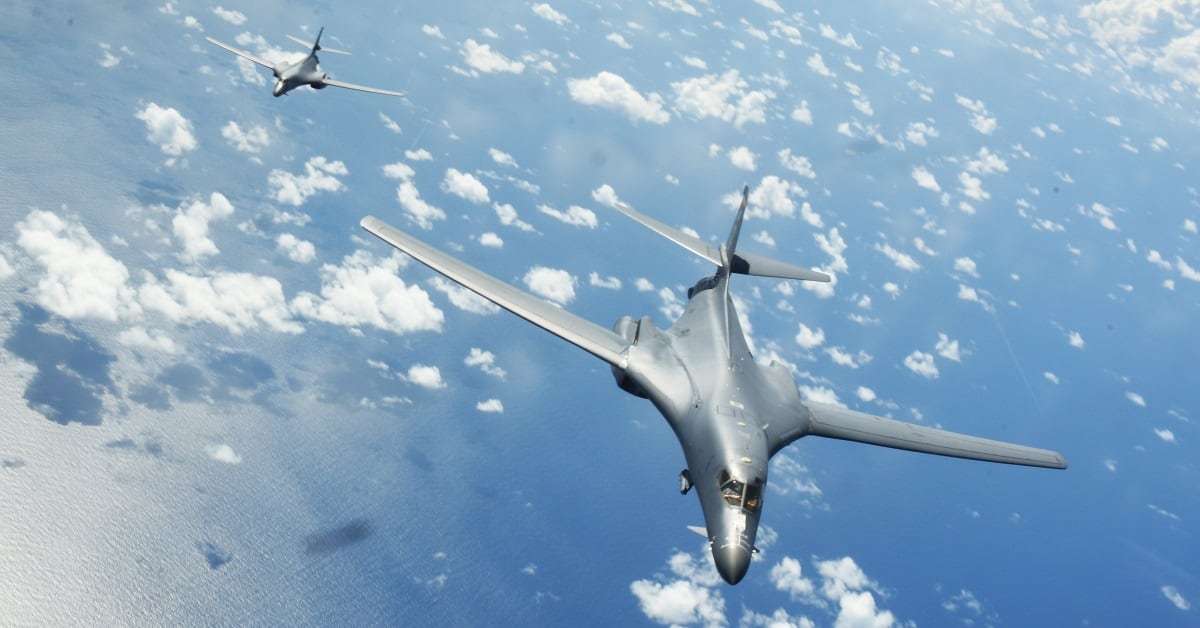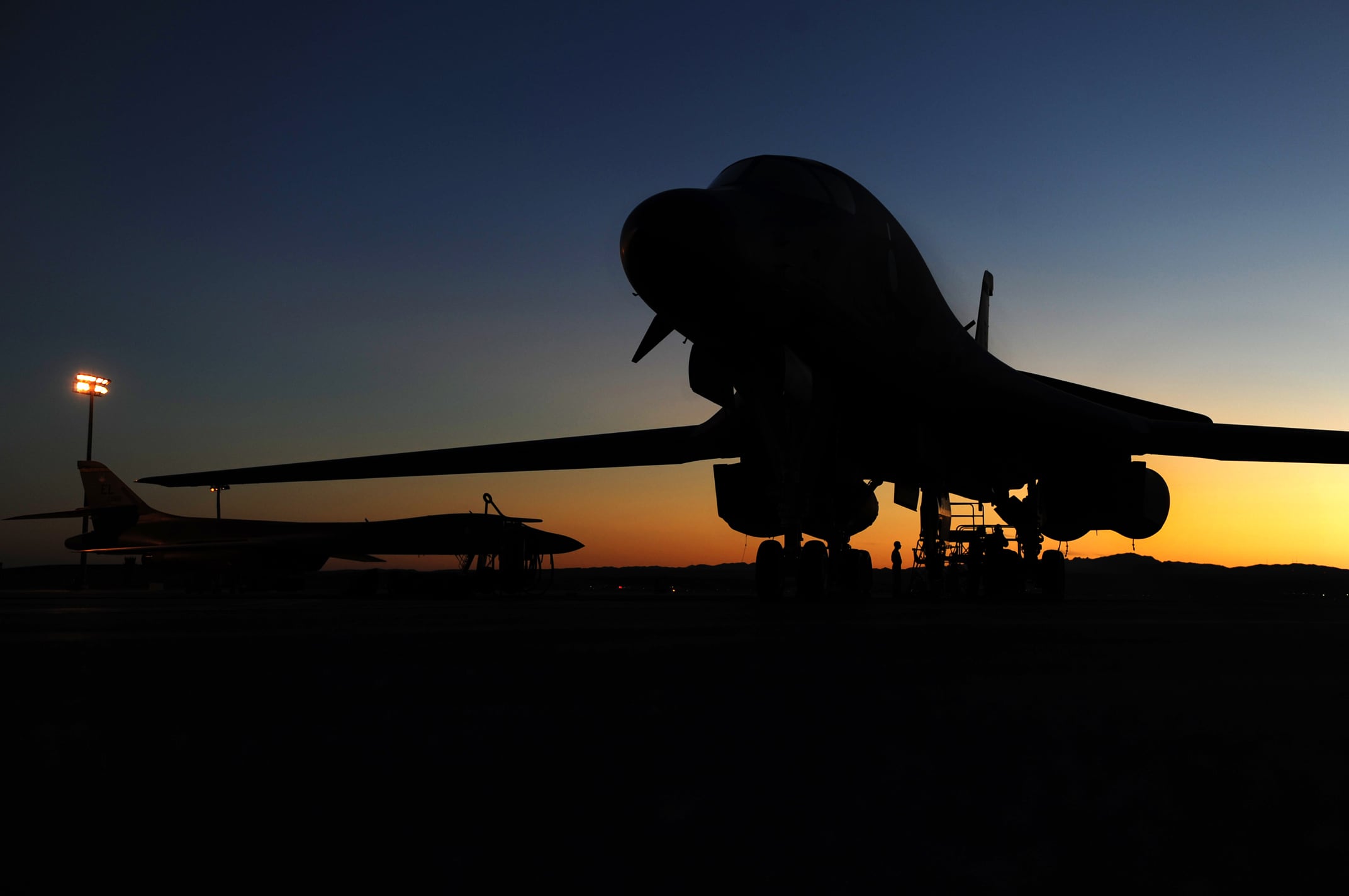The Air Force has again pulled its entire B-1B bomber fleet from the skies as it investigates problems with a part of the fuel system.
Gen. Tim Ray, head of Air Force Global Strike Command, indefinitely grounded the service’s 57 active Lancers amid safety concerns April 20, a command spokesperson said Friday. The War Zone first reported the standdown.
“During the inspection process following a B-1B ground emergency on April 8 at Ellsworth Air Force Base, South Dakota, a discrepancy with an augmenter fuel pump filter housing was discovered,” the command said. “As a precautionary measure, the commander directed one-time inspections on all B-1B aircraft to resolve this issue.”
Those inspections pointed to deeper problems with the B-1B inventory, prompting Global Strike to stand down the fleet for a “more invasive” analysis, the spokesperson said. That involves disassembling the filter housing and scanning it with X-rays and blue-light tools, according to the command. Once a plane is found to be defect-free, it will be reassembled, pressure-checked and returned to service.
Global Strike did not immediately provide more details about the nature of the filter housing issue, but The War Zone reported that an inspection of one airframe on April 8 revealed a hole that can leak fuel.
“86-0104 had been seen trailing a large plume of unburned fuel on landing,” the publication reported. The problem also prevents bomber pilots from turning on the afterburners, which are needed for takeoff, The War Zone wrote.
The Air Force declined to answer whether issues other than the fuel pump filter problem have been discovered upon a closer look.
“We are thoroughly investigating this matter,” Global Strike said. “Maintenance and operations professionals are looking into all aspects of the incident.”
RELATED

It’s too soon to say how long inspecting each bomber will take, and Global Strike is still figuring out how many aircraft are affected. The command declined to answer how many planes have been checked so far, and said it’s too early to know which tails need additional fixes.
“A safety stand-down of the B-1B fleet has been implemented until each aircraft can be inspected and that aircraft is deemed safe to return to flight,” the spokesperson said.
Global Strike is not canceling overseas bomber patrols or training exercises involving the B-1B as a result of the grounding. Lancers carry conventional, not nuclear, weapons.
“There is zero operational impact providing bomber task force support to combatant commands across the globe,” the service said. “Air Force Global Strike bombers will continue to support anytime, anywhere if called upon.”
In addition to Ellsworth, B-1Bs are based at Dyess AFB, Texas, with a major maintenance shop at Tinker AFB, Oklahoma. They no longer have a permanent presence in the Middle East, but still regularly fly to Europe, the Middle East and the Pacific.
RELATED

USAF has grounded the entire B-1B fleet multiple times in the past few years, including one in June 2018 that occurred after a bomber’s wing caught fire and its ejection seat malfunctioned, and again because of ejection seat concerns in March 2019.
Earlier this month, The War Zone also reported that one of the bombers suffered severe damage after a tablet computer was sucked into an engine. Both engines on one side of the plane needed to be replaced, the publication said.
The service began retiring 17 of its 62 B-1Bs in February after two decades of wear and tear from combat missions in Afghanistan, Iraq and Syria that tanked the fleet’s readiness. Its last Lancer is expected to head to the boneyard in 2036.
“Maintaining these bombers would cost 10s of millions of dollars per aircraft to get back to status quo,” Ray said in a statement earlier this year. “And that’s just to fix the problems we know about.”
Rachel Cohen is the editor of Air Force Times. She joined the publication as its senior reporter in March 2021. Her work has appeared in the Washington Post, the Frederick News-Post (Md.), Air and Space Forces Magazine, Inside Defense, Inside Health Policy and elsewhere.




